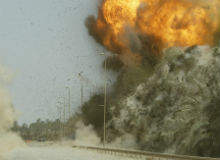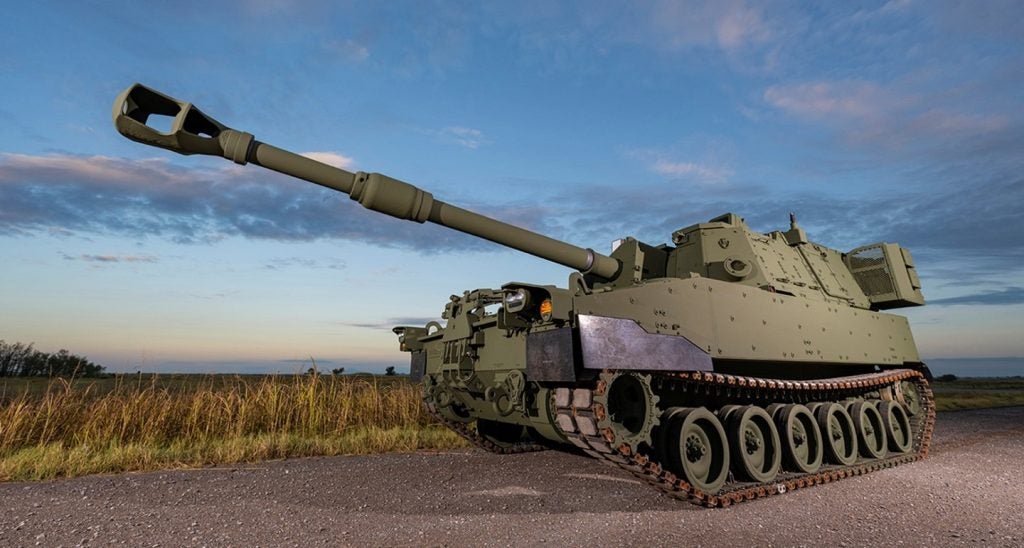

The final report of the Iraq Inquiry ran to some 2.6 million words and in it, Sir John Chilcot levelled scathing criticism at almost every aspect of the UK’s involvement in the conflict.
Britain opted to join the invasion before all the peaceful options for disarmament had been exhausted, the much-inflated ‘weapons of mass destruction’ (WMD) issue was presented with a certainty that was not justified, and policy was determined on the basis of flawed intelligence assessment. The circumstances surrounding the conclusion that there was a legal basis for military action were “far from satisfactory” and in spite of clear warnings, the consequences of the invasion were underestimated and planning for the post-Saddam Iraq was “wholly inadequate” – so the key findings state.
It amounts to a catalogue of failures that left the British Government unable to achieve its stated objectives in Iraq, despite a campaign which saw 179 UK service personnel killed, and left hundreds of thousands of Iraqis dead, with millions more being displaced.
Damning though all of this is, arguably the most important finding to come out of the Chilcot report was that the UK’s military role “ended a very long way from success.” The bravery and professionalism of ordinary service men and women was, it seems, significantly undermined by poor risk identification at the outset and then compounded by “some serious equipment shortfalls” once operations began.
See Also:
Critical shortages
In particular, there were critical shortages in key capability areas, especially reconnaissance and intelligence assets and helicopter support, and supply problems in getting essential kit to frontline troops.
How well do you really know your competitors?
Access the most comprehensive Company Profiles on the market, powered by GlobalData. Save hours of research. Gain competitive edge.

Thank you!
Your download email will arrive shortly
Not ready to buy yet? Download a free sample
We are confident about the unique quality of our Company Profiles. However, we want you to make the most beneficial decision for your business, so we offer a free sample that you can download by submitting the below form
By GlobalDataDeficiencies included sufficient body armour, desert boots and clothing, ammunition and even – remarkably given all the hype over WMDs – nuclear, biological and chemical (NBC) protection. In addition, the MoD was slow to replace the lightly armoured Snatch Land Rovers – nicknamed with grim army humour ‘mobile coffins’ – with better shielded protected patrol vehicles (PPVs) despite the increasing devastation roadside bombs were wreaking on UK forces. The lack of both enhanced body armour and PPVs has been heavily implicated in a number of British deaths.
The dreadful irony of this is that if many of the lessons supposedly learned from a number of previous conflicts and exercises, including the First Gulf War a decade earlier, had been remembered, much of it could possibly have been avoided.
Unlearned lessons
Poor asset tracking is one particular example that the Chilcot report flags up. It meant that a system that was already over-burdened was placed under even greater pressure in the build-up to the conflict, and led to kit that had been already deployed to the region not reaching the front line in time for the commencement of operations.
However, this was nothing new. In 1993, a Public Accounts Committee (PAC) report on the First Gulf War had already highlighted concerns that the MoD “did not have a sound system for tracking freight.” It meant then that some operationally critical items were lost to view, and 228 aircraft pallets worth £680,000 went missing completely. Six years later, in the 1997 report on UK operations in former Yugoslavia, asset tracking was once more identified as a problem despite the promises of ‘lessons learned’ following the first Gulf conflict – and the same worries were echoed again in a subsequent PAC report in 2000.
By 2009, when the UK left Iraq, Chilcot notes the MoD’s asset tracking system “was still in need of improvement” and sets out one clear lesson for the future: “The MoD has a responsibility to ensure that past mistakes are not repeated, and that its systems for asset tracking are robust.”
The shortened time-frame in the rush to war made matters worse. In his evidence to the inquiry, Air Chief Marshal Sir Graham Eric “Jock” Stirrup – now Baron Stirrup – who was Deputy Chief of Defence Staff (equipment) at the time of the invasion, said that they “simply didn't have enough time” to source everything required before the operation began.
He testified that it would have made a “significant difference” to have had six months to prepare rather than four. “I think in part for both clothing and body armour, the issue was it was all done so rapidly at the last minute, no one was quite sure who had what,” he said.
The implication for any future deployment on such a large scale is obvious – but this lesson too could and should have been learned before.
An opportune dry-run
In October 2001, in what, with the benefit of hindsight, can be seen as an opportune ‘dry-run’ for the later invasion of Iraq, some 22,500 British Armed Forces personnel from all three services took part in Exercise Saif Sareea II in Oman. The 1998 Strategic Defence Review (SDR) had established the need for greater expeditionary capability in the post Cold War era, emphasising a requirement to be able to go to an unfolding crisis and identifying the Gulf as one of the key areas where such a force might have to operate.
Saif Sareea was intended to test that capability, and it threw up a number of significant findings, for both good and ill, with regard to equipment, in-field modifications and weaknesses in the supply chain. Perhaps the most telling, however, was contained in the 2002 National Audit Office’s report on the exercise.
“Some lessons identified during previous operations were re-learned, which illustrated the tendency that skills learned on medium size operations such as the Gulf War dissipate over time as people move on. There is a strong argument that exercises of the size of Saif Sareea need to be conducted regularly in order to keep skills and experience up to date and to check that lessons previously identified have been implemented.”
The Chilcot report notes that by 2002 – a year after Saif Sareea and just a year ahead of the invasion – UK forces had still not acquired the equipment envisaged by the SDR. In that context, the subsequent inability to supply elements of it to Iraq must be seen, at least in part, as inevitable.
Lesson for the future
So what are the lessons of the Chilcot report? Depressingly, they seem rather familiar ones that should have been learned and implemented long ago. The wrong kit, sent to the wrong place or arriving at the wrong time, the kind of indecision by Army commanders and MoD bureaucracy which led to lengthy delays in replacing the Snatch Land Rovers, and the demands to hasten the speed of deployment.
It is much too early to expect to see many changes being implemented, either to address these issues or to improve equipment testing and selection processes for any future actions. Hopefully they will come, but at 2.6 million words the report is five times longer than War and Peace and the full implications of it are still being mulled over.
For all of the shortcomings he lays bare, Sir John pays tribute to “the achievements of the MoD and the Armed Forces in preparing the forces deployed for combat operations in Iraq” describing them as “very considerable.” Perhaps then the most important lesson for the future is that they should never again be set up to fail, either by setting the pace too fast, by inadequate equipment sourcing, or by simply not knowing where that equipment is.
That would be a good lesson to have learned at last.






Related Company Profiles
PAC SpA
AIR, INC
SDR INC
National Audit Office
The British Government